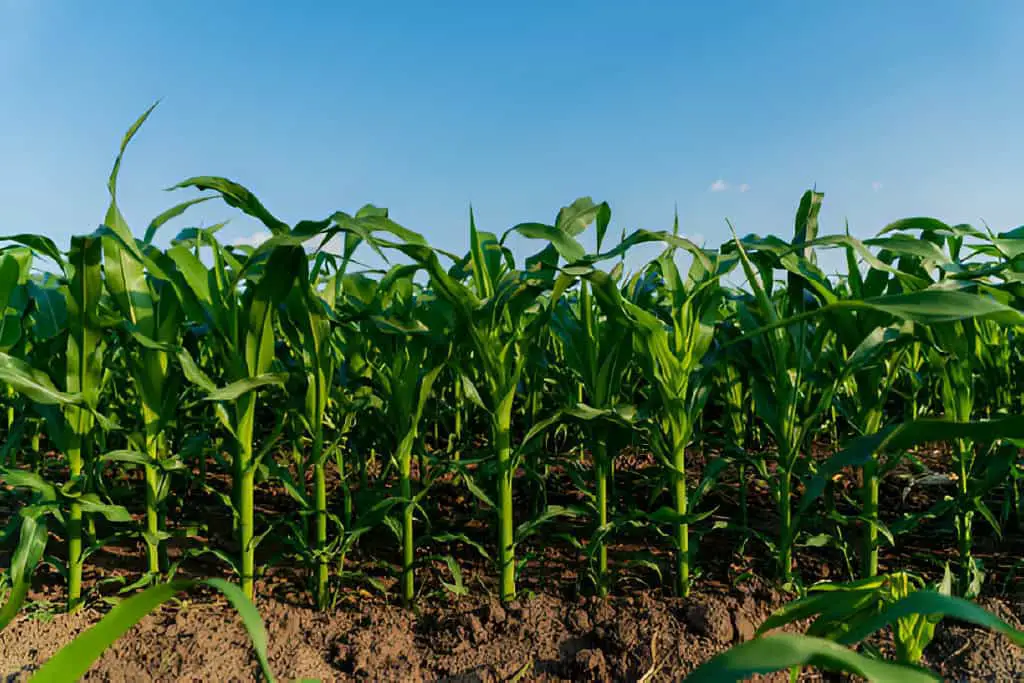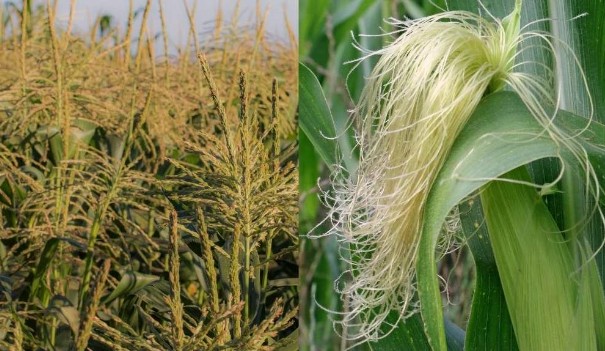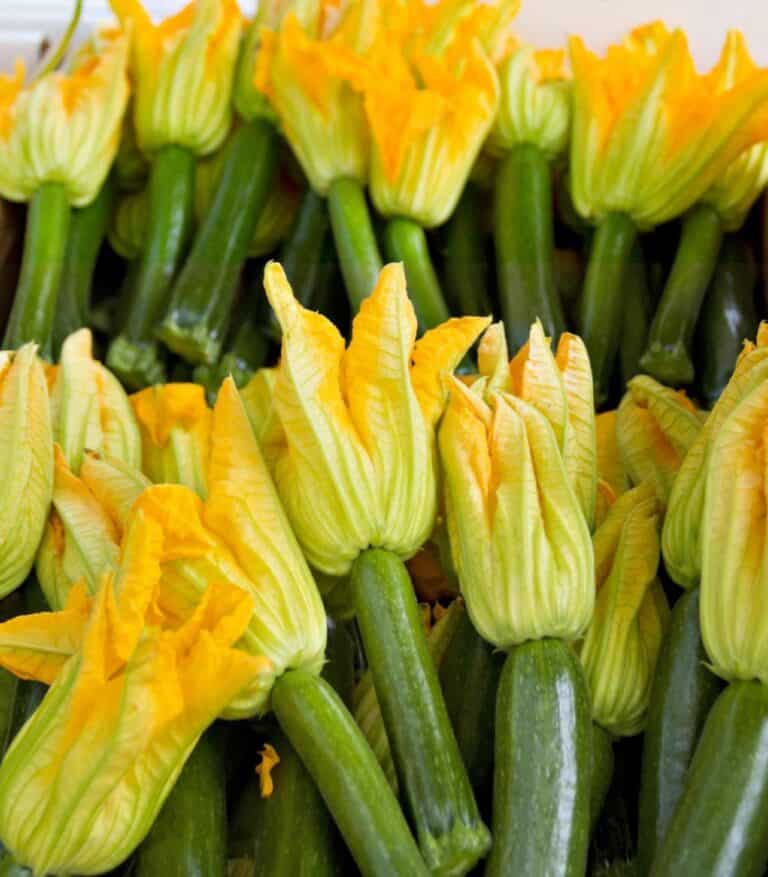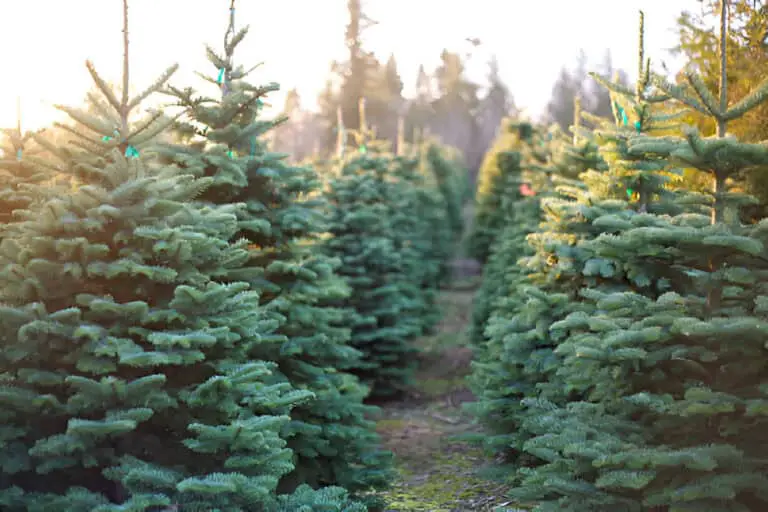Expert Advice: Why Corn Doesn’t Need a Trellis in Your Garden

Growing corn in your garden can be a rewarding experience, providing you with fresh, sweet corn right at your doorstep. Unlike many climbing plants, corn doesn’t require a trellis to grow.
Understanding the reasons behind this can help you plan your garden more effectively and ensure a bountiful harvest. Let’s explore why corn stands tall on its own and how you can support its growth.
This article explores the natural growth habits of corn, how it supports itself as it grows, and why this makes it an ideal crop for gardens of all sizes. Whether you’re a seasoned gardener or just starting out, learning about corn’s unique growth pattern can improve your gardening. It can also lead to satisfying results.
Understanding Corn Growth

The Structure of Corn Plants
Corn, or maize, is a robust and tall-growing plant. It belongs to the grass family and can reach heights of 6 to 12 feet, depending on the variety. The plant’s structure includes a strong, fibrous stalk that supports its growth vertically. This stalk is a natural support system. It makes things like trellises unnecessary.
Root System
Corn has a deep and extensive root system that anchors it firmly into the ground. The roots spread out and go deep, providing stability and support. This root system allows corn to stand upright even in strong winds, further eliminating the need for a trellis.
Natural Growth Patterns
Corn grows in a way that allows each plant to support itself and its neighbors. When they are planted closely, the plants create a network of roots and stalks. The network provides mutual support. This dense planting technique is one reason why corn is often grown in blocks rather than single rows.
Benefits of Growing Corn Without a Trellis
Space Efficiency
One of the main advantages of growing corn without a trellis is space efficiency. Trellises take up much space in a garden. But, corn supports itself. This lets you use your garden area better. You can plant corn closely together, optimizing the use of available space.
Reduced Maintenance
Growing corn without a trellis reduces the need for extra garden stuff. It also cuts down on maintenance. Trellises require construction, installation, and regular checks for stability. By eliminating this step, you save time and effort, allowing you to focus on other aspects of gardening.
Cost-Effective
Not needing a trellis saves money on gardening supplies. Building or purchasing trellises can be expensive, especially for large gardens. Corn’s natural growth eliminates this expense, making it a more cost-effective option for home gardeners.
| Also read: Can You Plant Corn in the Same Spot Every Year? |
Best Practices for Growing Corn
Planting in Blocks
For optimal growth and support, plant corn in blocks rather than single rows. This method allows the plants to support each other as they grow. Typically, four or more short rows close together work best.
Soil Preparation
Corn thrives in well-drained, fertile soil rich in organic matter. Before planting, prepare the soil by adding compost or well-rotted manure. Ensure the soil pH is between 6.0 and 6.8, as corn prefers slightly acidic to neutral soil.
Watering
Corn requires consistent moisture, especially during the germination and early growth stages. Water the plants deeply once or twice a week, ensuring the soil remains moist but not waterlogged. Mulching around the base of the plants can help retain moisture and reduce weeds.
Fertilizing
Corn is a heavy feeder and benefits from regular fertilization. Use a balanced fertilizer when planting. Then, use nitrogen-rich fertilizers as the plants grow. Side-dressing with compost or a commercial fertilizer can boost growth and yield.
Common Issues and Solutions
Wind Damage
While corn plants are generally stable, they can be susceptible to strong winds. To mitigate this, plant corn in a sheltered location or use windbreaks like fences or taller plants. Planting in blocks also helps reduce wind damage by providing mutual support.
Pests and Diseases
Corn is prone to pests like corn earworms, cutworms, and aphids, as well as diseases like rust and smut. Regular monitoring and early intervention are key to managing these issues. Use organic pest control methods, such as neem oil, peppermint oil bug repellent spray, or insecticidal soap, and practice crop rotation to reduce disease risks.
Pollination
Corn relies on wind pollination, so proper spacing is crucial. Planting in blocks enhances pollination efficiency. If you notice poor kernel development, you can hand-pollinate by shaking the tassels. This releases pollen onto the silks.
| Read: Tomato Plants Trellis Support: Advantages & Disadvantages |
Harvesting Corn
When to Harvest
Corn is ready for harvest when the kernels are plump and the silks have turned brown. Check the ears by peeling back a small section of the husk and pressing a kernel with your fingernail. If the juice is milky, the corn is ready.
How to Harvest
To harvest, grasp the ear firmly and twist it downward. This motion should detach the ear from the stalk cleanly. Harvest in the morning when the sugar content is highest for the sweetest taste.
Post-Harvest Storage
After harvesting, corn should be used or processed quickly to preserve its sweetness. If not consumed immediately, store the ears in the refrigerator with the husks on to retain moisture. For longer storage, consider blanching and freezing the kernels.
Comparative Table: Corn Growth Needs vs. Trellis-Grown Plants
| Aspect | Corn | Trellis-Grown Plants |
| Support Needed | None | Trellis, stakes, or other support |
| Space Efficiency | High, due to block planting | Moderate to low, due to trellis |
| Maintenance | Low | High |
| Cost | Low | High (trellis construction) |
| Watering | Consistent, deep watering | Varies by plant type |
| Fertilization | High, regular feeding needed | Varies by plant type |
Conclusion
Understanding why corn doesn’t need a trellis can improve your gardening. It makes it easier and faster. Corn grows naturally. It has robust roots and self-supporting stalks. These features remove the need for extra structures. This lets you focus on other gardening tasks.
Corn has unique traits. By using practical gardening, you can grow this staple with confidence. These insights will help you grow corn well. They are for both seasoned gardeners and beginners.
Enjoy the journey from planting to harvest, and savor the fruits of your labor with homegrown corn.






